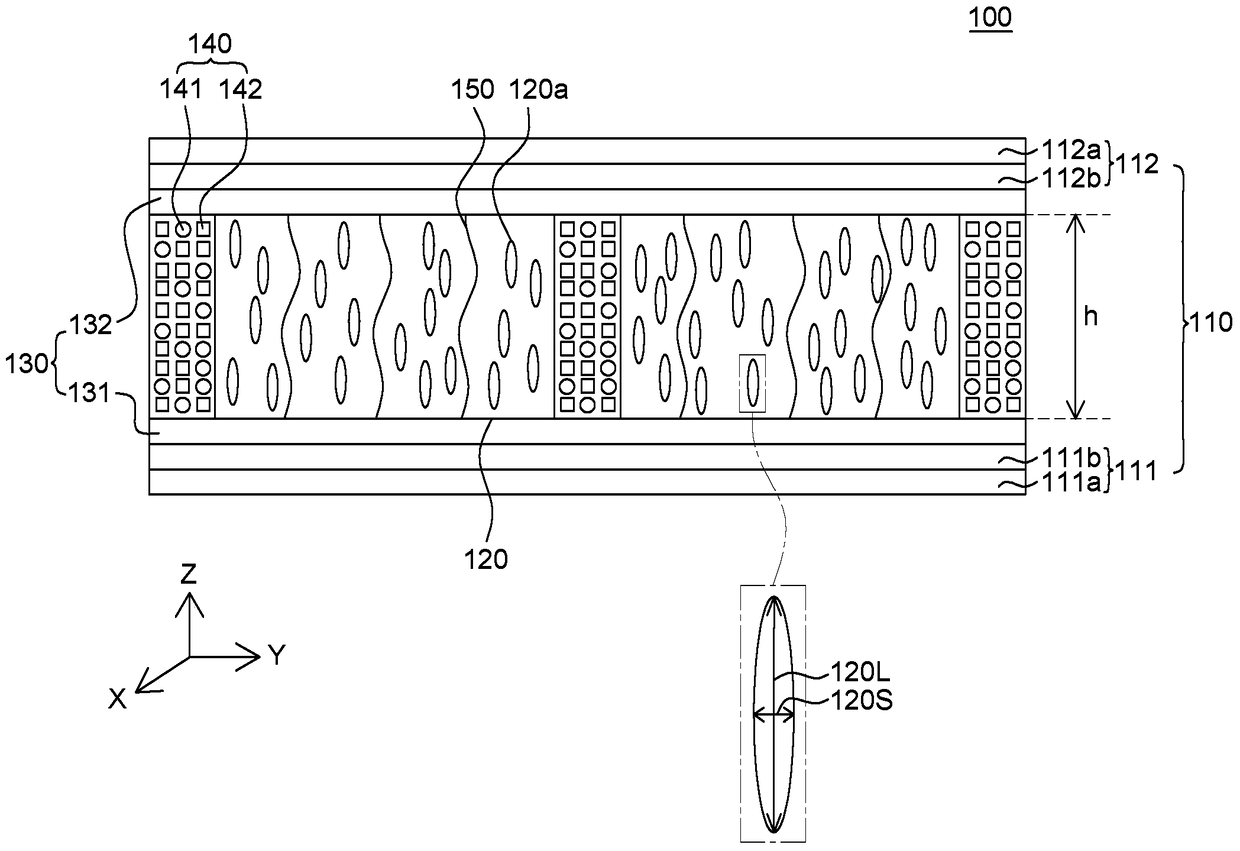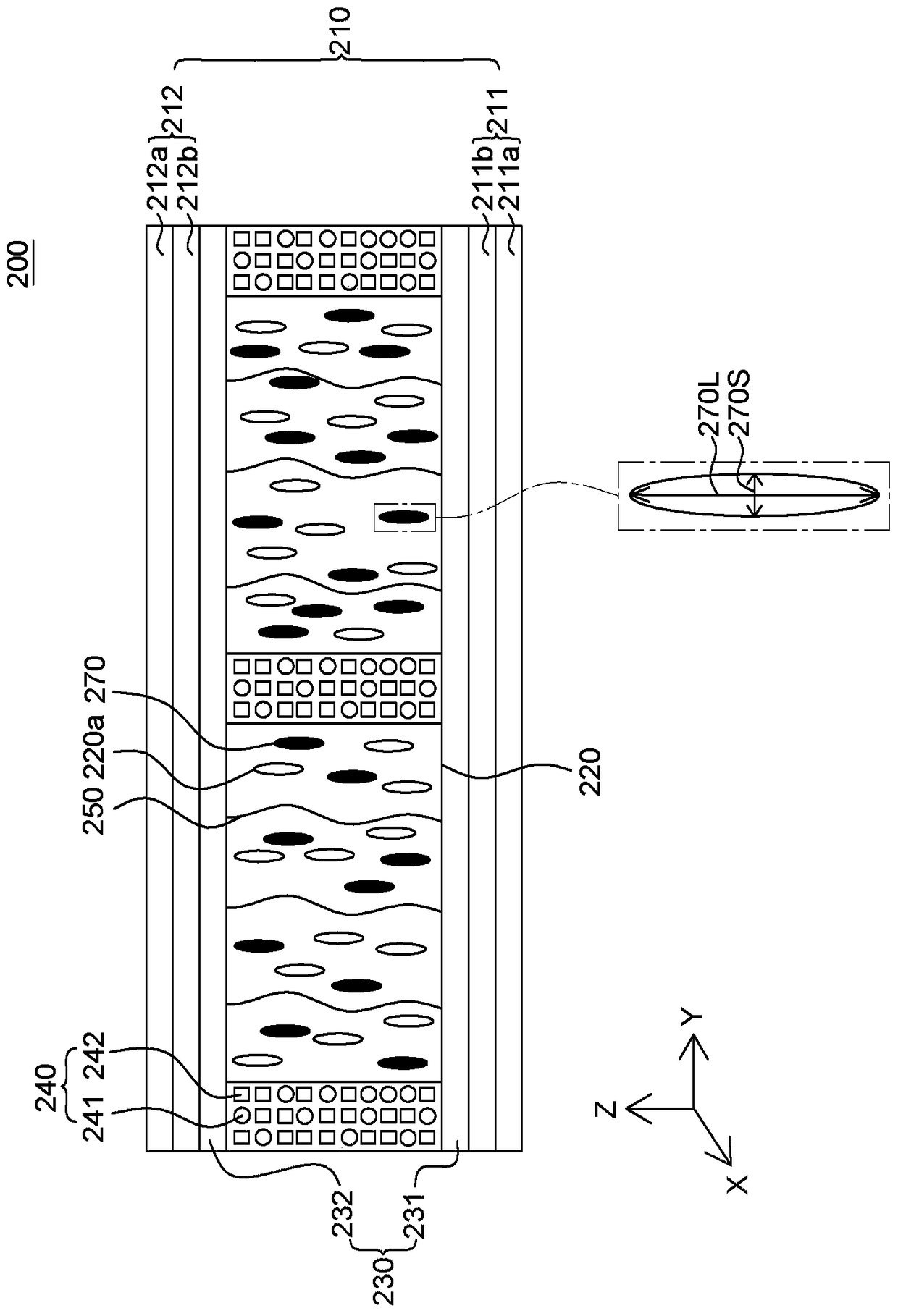Light control device and manufacturing method thereof
A light control, liquid crystal technology, applied in optics, nonlinear optics, instruments, etc., can solve the problems of reduced transparency, high energy consumption, no contrast, etc., and achieve the effect of improving transmittance, reducing energy consumption, and reducing the difference in refractive index
- Summary
- Abstract
- Description
- Claims
- Application Information
AI Technical Summary
Problems solved by technology
Method used
Image
Examples
Embodiment approach
[0097] Polymer dispersed liquid crystals (PDLCs) and polymer network liquid crystals (PNLCs) used as light control devices of transparent display devices have different mixing ratios of monomers and liquid crystals. In general, PDLC has a higher percentage of monomer than PNLC. Thus, the PDLC realizes an initial light-shielding mode in the initial state of no voltage application, where incident light is scattered by randomly oriented liquid crystals and polymerized monomers. PDLCs also achieve a transparent mode by allowing incident light to be transmitted but not scattered when a voltage is applied and thereby vertically aligns the liquid crystals. If the PDLC is used as a light control device of a transparent display device, continuous application of voltage is required to achieve a transparent mode in standby.
PUM
| Property | Measurement | Unit |
|---|---|---|
| refractive index | aaaaa | aaaaa |
| refractive index | aaaaa | aaaaa |
| refractive index | aaaaa | aaaaa |
Abstract
Description
Claims
Application Information
 Login to View More
Login to View More - R&D
- Intellectual Property
- Life Sciences
- Materials
- Tech Scout
- Unparalleled Data Quality
- Higher Quality Content
- 60% Fewer Hallucinations
Browse by: Latest US Patents, China's latest patents, Technical Efficacy Thesaurus, Application Domain, Technology Topic, Popular Technical Reports.
© 2025 PatSnap. All rights reserved.Legal|Privacy policy|Modern Slavery Act Transparency Statement|Sitemap|About US| Contact US: help@patsnap.com



